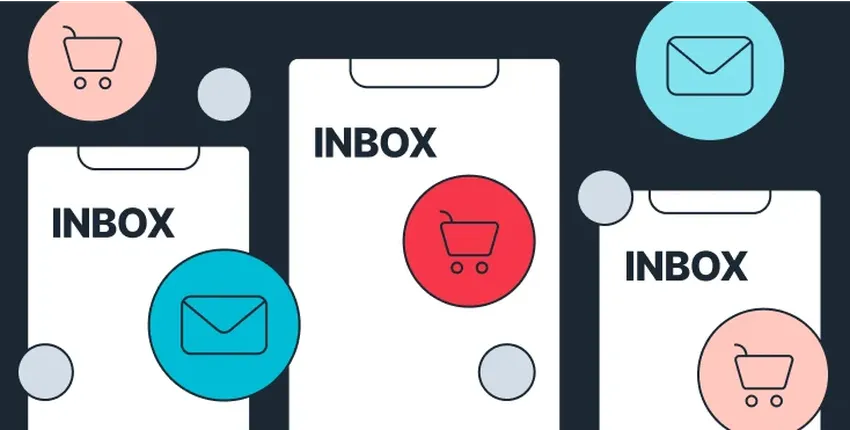
Last updated Tue May 20 2025
10+ Ways to Lower Customer Acquisition Costs
Low customer acquisition costs are among the biggest prerequisites for sustainable business growth.
Think about it: if you’re constantly pouring money into getting leads, your revenue might be leaking and hurting your bottom line.
But there’s good news: you can optimize your website conversion funnel to drive brand awareness and conversions at lower customer acquisition costs.
That’s what we’re going to do now.
In this article:
Create personalized shopping experiences
Wisepops helps you optimize for growth and sales with behavior-based onsite campaigns

Read the study of 500 Shopify businesses to find out how they engage and retain customers:
What is Customer Acquisition Cost?
Customer acquisition cost (CAC) is the amount of money a company spends on sales and marketing campaigns to win new customers. CAC typically includes the total cost of tool subscriptions, campaign budgets, and other costs spent on sales and marketing efforts.
Your costs depend primarily on your customer acquisition funnel. If your funnel is short (say, product discovery → purchase), then your CAC will likely be lower than others. But, if your funnel involves multiple stages and an intricate buyer journey, you’ll have to spend more on each customer.
Here’s how you can calculate your average customer acquisition cost before planning ways to lower CAC:
CAC formula
Total sales + marketing expenses / Total number of new customers = CAC
Including every expense in this is essential to get a realistic estimate of the money you’re spending to acquire one new customer.

How to lower customer acquisition costs
1. Plan your marketing around the target audience
One of the biggest reasons why you’re spending more and getting less in return can be because you’re targeting the wrong people. If your sales and marketing efforts are directed toward those who don’t need your product or service, you’re clearly wasting your budget.
This is a foundational problem, and it can severely hurt your revenue as you scale. You can fix this issue by defining your target audience and planning campaigns around their pain points.
Here are a few ways to create laser-focused campaigns tailored to your audience:
Create buyer personas. Start by identifying all potential people interested in buying your product/service. You should define their pain points, jobs to be done, motivations, and more. Then, categorize these buyers into different personas based on common characteristics.
Engage in social listening. Another great way to get a pulse of your buyers is through social listening. You can use tools like Mention, Brand24, and Meltwater to monitor your brand mentions and stay on top of what people say about your competitors.
Use psychographic segmentation. On top of demographic data, you can also use psychographic characteristics like values, interests, and lifestyles to further segment your buyers. This helps in planning campaigns at an emotional level to strike a chord with your audience.
Website surveys. Gather direct feedback from your website visitors. These website exit surveys can be strategically placed on your site to ask specific questions related to your products or services. This will help you understand the needs and preferences of your audience, ensuring that your campaigns are tailored to address their specific concerns.
A/B test your campaigns. Implement A/B testing on various elements of your outbound email sequences, such as subject lines, content, and call-to-actions. Testing these variants with a segment of your audience helps identify the most effective approach, increasing open and response rates. This efficient method optimizes your email campaigns, directly contributing to more effective customer acquisition.
Related:
2. Build a conversion rate optimization plan
What if you’re reaching the right people, bringing them to your website, and losing them without a conversion? This means some website loopholes prevent potential customers from buying your product/service.
If data from analytics tools like Mixpanel or Google Analytics indicates such a pattern, then you need a conversion rate optimization (CRO) plan to fix these loopholes.
A CRO action plan identifies all possible reasons why interested customers abandon your website without making a purchase. An airtight strategy will align your website (and other channels) with buyer expectations with the goal of maximizing sales.
Here are a few ways to optimize your conversion rate to lower customer acquisition costs:
Track customer movements: The first step in your CRO plan should always be to create a strong tracking setup to monitor customer interactions effectively.
Optimize the user experience: The most critical way to enhance your conversion rate is by making your onsite user experience frictionless. This includes a seamless interface, fast loading times, intuitive navigation, mobile responsiveness, and quality content.
Nudge visitors to convert: Another great way to maximize conversions from your website is by reiterating your offer through onsite messaging.
Get started on your plan:
3. Make targeted campaigns for returning customers
Your ecommerce store is where you have the best chance to engage your visitors. While the focus on first-time visitors is important, creating personalized offers for returning visitors is essential to lower CAC.
Here's what "personalized offers for returning visitors" actually means:
Let's say you have a welcome popup on your website with the discount for first-time customers. Showing that campaign to returning visitors would not be a good thing because they already used that discount.
To make sure that your popup appears to returning visitors only, you choose Returning visitors in the display settings (here's how this options looks like Wisepops):
Now, let's see examples of campaigns created specifically for returning visitors to give you an idea of how you can convert yours better.
This website popup example offers to take a look at a product a visitor viewed during their last visit (and it appears only to that visitor):
Next—
This one appears to a returning visitor who viewed a couple of pages on an online store (thus suggesting some interest in buying) with a limited-time offer to drive urgency:
Also—
You might reduce hesitations to buy by showing a review from a happy customer like that:
Creating such campaigns (be it a popup, an embedded signup form, or a website bar) is easy with a good popup tool.
Let me recommend Wisepops—the first onsite marketing platform designed to give marketers like you the best tools to convert traffic: popups of all types, embedded forms, website sticky bars, and onsite notifications:
Unlimited free trial, no cc needed
Not sure yet? See who uses Wisepops (and their results) first.

4. Leverage retargeting across marketing channels
You’re virtually leaving money on the table by not retargeting customers who engage with your sales and marketing campaigns once.
Retargeting is a way to re-engage potential customers who might want to buy your product or service but need an extra push to make the final purchasing decision.
Follow these simple tips to create a retargeting campaign:
Segment your audience: Categorize buyers based on the kind of interactions they've had with your brand, like visiting your website, clicking on an ad, abandoning the cart, etc.
Run personalized ads: Create specific ads for each segment and personalize the messaging for these segments. For example, you can show ads relevant to the product/service/feature prospects browsed on your site.
Cross-device retargeting: Expand the scope to cover multiple devices, like desktops, mobile, tablets, etc., to make a bigger impact.
Multi-channel approach: The silver bullet for any retargeting campaign is covering several channels to get on your prospects’ radars. You can run ads on social media and search engines for specific products or keywords that they looked for. You can also run email marketing campaigns to share relevant details.
A retargeting strategy can significantly lower customer acquisition costs because you’re spending money only on high-intent prospects who are likely to convert.

5. Get referrals from your existing customers
Referrals are the same as word-of-mouth marketing, where happy customers recommend others to buy from your brand.
Referral marketing is a powerful channel for acquiring new customers at a lower cost because it builds a level of trust among prospects. So, potential buyers don't have to go through the whole process of reviewing your product/service.
You can create a referral program to incentivize existing customers to bring more referrals. Whether you're a B2B business or run a B2C brand, a referral program can unlock more conversions for you.
You have to make the process of referring someone super easy. Plus, the terms should be transparent and not give customers any false expectations.
When you convert a client through referral, send a personalized message thanking the customer who brought in this lead. You can set up these email sequences using referral marketing tools to send timely messages.
Here’s an example of a referral program:
Related:
How to get sales on Shopify [guide + examples]
6. Automate your marketing processes
Another best practice to reduce CAC is to keep your processes as lean as possible. This is possible with marketing automation doing most of the heavy lifting on your behalf.
With the right marketing automation tools, you can automate:
Lead generation on your website. Think website popups, bars, signup forms, onsite notifications, live chat, chatbots, surveys, etc.
Email campaigns. You can automate campaigns for different use cases like a new purchase, post-purchase review, first website visit, etc.
Social media marketing. You can schedule and publish posts depending on when your audience is the most active
Get started with automation:
7. Invest in evergreen content marketing
Owned media can produce better ROI than paid media. It also creates sustainable growth for the long term.
That's why you should invest in evergreen (the one that stays relevant over a long period of time) content marketing as early as possible to turn it into an acquisition lever as soon as possible.
These content types work best for eCommerce:
Product Guides and How-to Articles: Publish guides like "Choosing the Right Skincare Routine for Your Skin Type" for practical product usage.
Customer Testimonials and Success Stories: Feature stories of customers benefiting from your products, such as fitness journeys using your gear.
Video Demonstrations and Reviews: Create product demonstration videos (you can promote them with video popups) or have influencers review them, like kitchenware cooking demonstrations.
Blog Posts on Relevant Topics: Write about topics related to your products, such as a fashion blog discussing the latest trends.
FAQs and Educational Content: Offer educational content, such as a health supplement store explaining the science behind their products.
The key to effective content marketing is prioritizing quality over quantity. Prepare a content calendar to stay on top of your content plans for the coming weeks or months and optimize all content for search to drive visibility through search engines.
You can also repurpose your content as leaed magnets to generate leads:
8. Get and use social proof in the right places on your website
Good social proof can make all the difference for potential buyers. When you show customers you can walk the talk, they’re more likely to buy from you.
So, create a plan to use social proof strategically to optimize your conversion rate. You can use:
Customer testimonials on your website and social media
Ratings from third-party platforms on your site and emails
User-generated content on specific landing pages and socials
Trust badges and industry certifications on your website
The goal is to make potential customers feel confident in buying from you. Think from their perspective to find the best placement for your social proof assets.
Blume, a skincare brand, is one of the brands that uses this approach and promotes customer reviews:

9. Launch co-marketing campaigns
You can also work with other brands to reach a broader audience. This allows you to gain visibility among another brand’s buyers and possibly get some conversions.
The key here is to choose the right partner for this campaign. Make sure the partner brand caters to a similar audience, if not the same. You should also evaluate their product/service and ensure it aligns with your offering.
You can sell a packaged deal with both brands’ products. Alternatively, you can also create content together, showcasing the expertise of your teams. For example, Homesick collaborates with Lucasfilm on Star Wars-themed candles and advertising:
10. Experiment with influencer marketing
This is how you get started with influencer marketing:
Identify Relevant Influencers: It’s crucial to have an airtight vetting + hiring process. Start by finding influencers whose audience and content align closely with your brand values and target market.
Set Clear Goals and KPIs: Establish specific objectives and key performance indicators (KPIs) for your influencer campaigns, like brand awareness or conversion rates. It’s a great practice to create brand guidelines to give influencers an insider’s view of your business.
Develop Authentic Partnerships: Focus on building genuine, long-term partnerships with influencers, prioritizing authenticity and mutual benefit in your collaborations.
Creative freedom: Do not control everything, give them the creative freedom to execute your vision The fashion brand Colorful Natalie leverages giveaways and contests as a strategy to work with micro influencers (see below).
Related:
Giveaways ideas [+case study]
11. Leverage TikTok and YouTube
Even if you have a social media marketing strategy, it’s time to shift your focus to TikTok and YouTube.
TikTok promises virality and virality = brand awareness. As more and more people discover your brand and enter your marketing funnel, you can convert them into paying customers through a combination of CRO, content, social proof, and retargeting—tactics that we discussed above.
Moreover, YouTube is a source of education for so many users worldwide. With a strong YouTube content and SEO strategy, you can build a thriving community there. This will turn into a channel of consistent lead generation in no time.
Beardbrand uses YouTube as a key platform to share a wide range of content, including over 1,000 videos focusing on beards, men's grooming, and lifestyle, aimed at educating and inspiring their audience. They regularly release new content featuring expert barbers from their Beardbrand Barbershop in Austin, Texas:

Ecommerce case studies (with performance data and tips from marketers and business owners)
Summary
That’s a wrap on our best tips for reducing customer acquisition costs. Remember that the success of your sales and marketing efforts ultimately comes down to the quality of your acquisition funnel. You can start optimizing it for maximum conversions at minimum costs using these tips today!

Eduard Klein
Eduard Klein is an International Digital Growth Marketer, Blogger, and Online Business Coach with a global mindset. He guides through the process of starting and growing a digital business, and riding the wave of digital technology and marketing without getting swept away.
Related articles

4/22/2025
Learn how to re-activate your subscribers with re-engagement emails. See re-engagement email examples with best practices.

5/20/2025
Learn how to create a convincing newsletter signup form. Includes actionable tips and examples.
